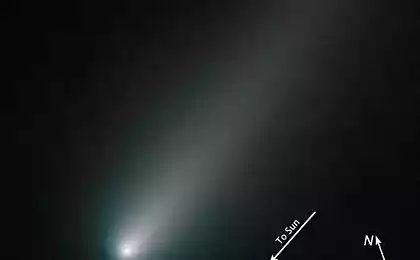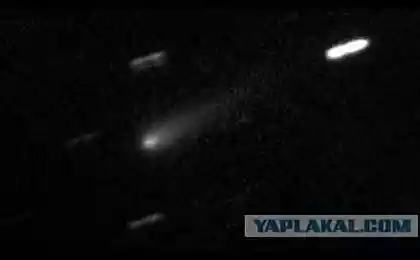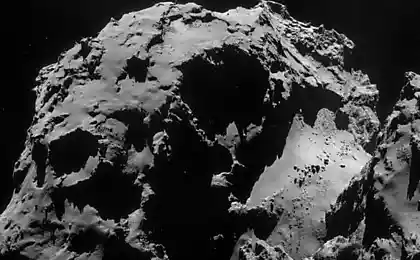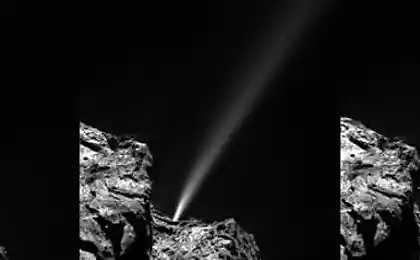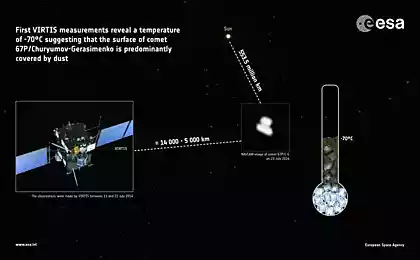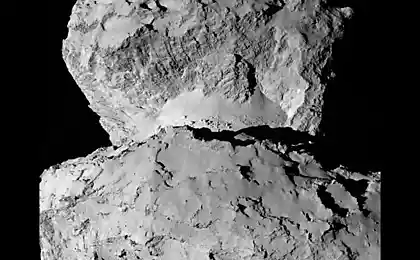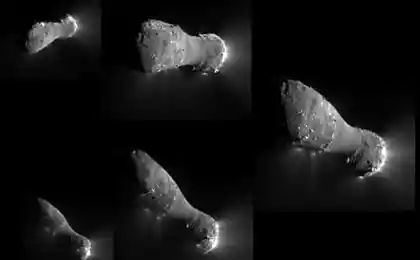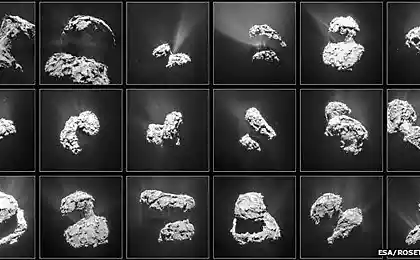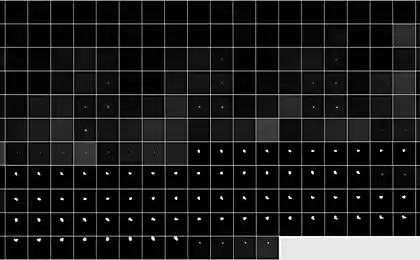1117
Scientists have built a map of the comet Churyumov-Gerasimenko, based on high-definition images
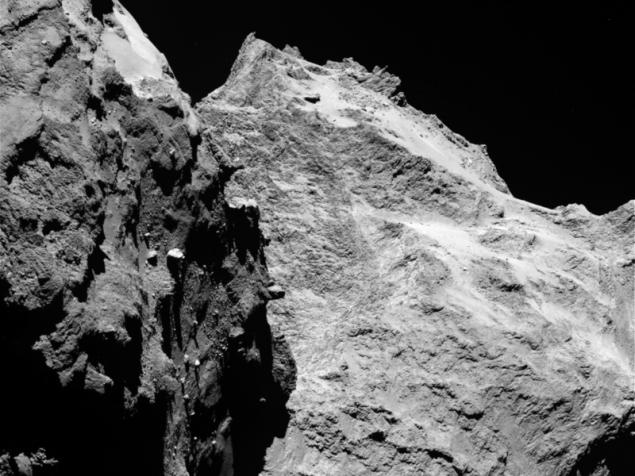
In this photo visible surface of various types. The left side of the comet in the photo - it's a big part of the kernel, right - the "head", a minority
November, time of landing landing probe on the surface of the comet Churyumov-Gerasimenko, closer. Interplanetary probe Rosetta is now at a distance of a few dozen kilometers from the comet, and every hour, scientists produced new data on the comet, its structure and features.
In addition, come and high resolution images obtained with the help of the scientific instrument OSIRIS. Now very high detail photos: 1 pixel = 75 centimeters. According to scientists, this is the record quality pictures ever man has seen the comet's surface with a high detail.
Based on latest pictures of the comet nucleus experts constituted a kind of map of the comet. Scientists have identified a number of homogeneous regions, each of which differs from the neighboring "region" of a feature: the presence of boulders, channels, elevations or depressions. Needless to say, this card is not scientists create for fun (although this, too), but in order to make the task of selecting a landing site for the probe Philae easier.
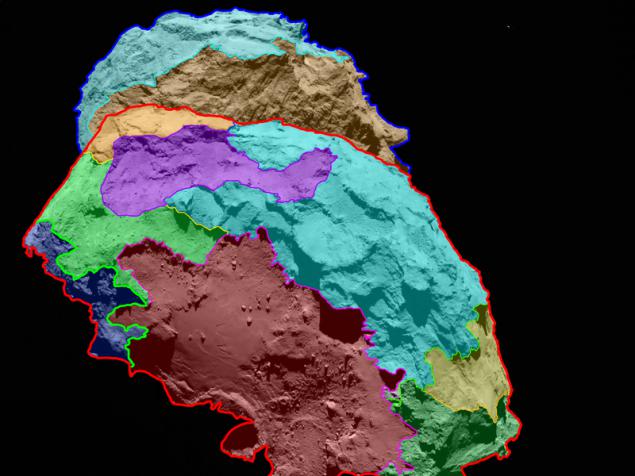
The first map of the comet's nucleus - is only the beginning, since the surface of the comet still need to learn, and a fairly short time frame. Already on 13-14 September this year, the team responsible for the landing of the probe must choose only two landing zone: primary and alternate. In a few weeks, scientists have finally agreed on the main landing zone landing probe, and begin to prepare for landing.
It is worth noting that the station itself Rosetta create a large number of scientific organizations. Only in creating OSIRIS instrument was attended by such scientific organizations, as Max Planck Institute for Solar System Research (Germany, CISAS, University of Padova (Italy), Laboratoire d'Astrophysique de Marseille (France), Instituto de Astrofísica de Andalucia, CSIC (Spain), Scientific Support Office of the European Space Agency (The Netherlands), Instituto Nacional de Técnica Aeroespacial (Spain), Universidad Politéchnica de Madrid (Spain), Department of Physics and Astronomy of Uppsala University (Sweden), Institute of Computer and Network Engineering of the TU Braunschweig (Germany) i>.
Via mps
Source: habrahabr.ru/post/236241/
NASA completed the construction of the first module of a reusable spaceship Orion
Results of the meeting of the Special Committee NASA: Curiosity will drive less, more boring, 7 "alien" missions extended


